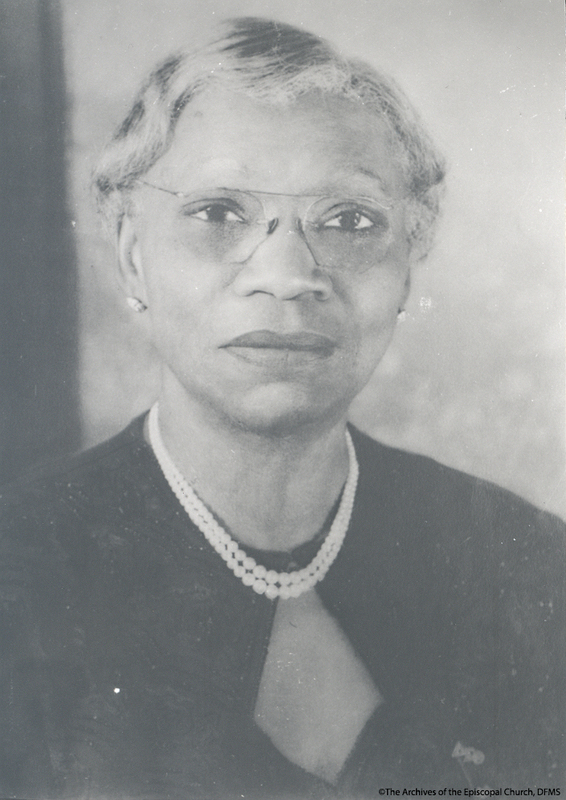Leadership Gallery
Artemisia Bowden, 1879-1969
Artemisia Bowden was a remarkable lay woman who took her Christian faith and Episcopal education directly into the world in order to transform it for the better. Bowden was born in Georgia to Milas and Mary Bowden and attended St. Athanasius’ parish school in Brunswick. She went on to study at St. Augustine’s Normal, Industrial, and Collegiate School in Raleigh, North Carolina and was graduated in 1900. She immediately began a career in teaching at a North Carolina parish school in Fayettville.
Bowden’s great achievement began in 1902 when she was called to Texas by Bishop James Johnson in order to revive St. Philip’s Mission in San Antonio. Artemisia’s task was to take control and upgrade the normal and industrial school that had been associated with the mission, which had begun as an African Methodist Episcopal congregation. Her experience at St. Athanasius and St. Augustine’s, both Episcopal institutions, offered her reliable models for taking on the task with little or nothing to start except Bishop Johnson’s goodwill and encouragement and later the support of the Women’s Auxiliary of the Diocese of West Texas. St. Philips’s served mostly poor Black girls and under Bowden’s leadership it became a boarding school and by 1926 it achieved junior college status.
Bowden used her personal connections within the Church and the community to extend the reputation of St. Philip’s College, and for many years she was able to carry out the essential educational tasks with small local grants and some aid from the Episcopal Church’s American Church Institute. The Great Depression hit hard, however, and in the face of reduced Church funding, she increasingly turned to her civic connections in the Black community and city government to keep St. Philip's afloat. In 1942 she reached a successful outcome in a long campaign to have the school incorporated into the San Antonio Independent School District as a city supported and publicly owned educational institution for Black youth. Ms. Bowden continued to direct the College as its dean until she retired in 1954. In addition to graduate work at Columbia University and The New York School of Social Work, Bowden received honorary degrees from Wiley and Tillotson Colleges.
Artemisia served as president of the San Antonio Metropolitan Council of Negro Women and was founder and president of the city's Negro Business and Professional Women's Club. In 1947 she was named to the Texas Commission on Interracial Relations. She is credited for being primarily responsible for the introduction of a Black nursing unit in Robert B. Green Hospital, for securing Lindbergh Park for Black residents, and for establishing the East End Settlement House. She is remembered in the community today in the naming of Bowden Elementary School in San Antonio and Bowden Administration Building at St. Philip's College, which now serves a diverse community of students.
Artemisia Bowden died on August 18, 1969 and was buried from St. Philip’s Episcopal Church in San Antonio where she generated an enormous pool of spiritual energy that sustained her ministry throughout 52 years as an educator. [Sources]


